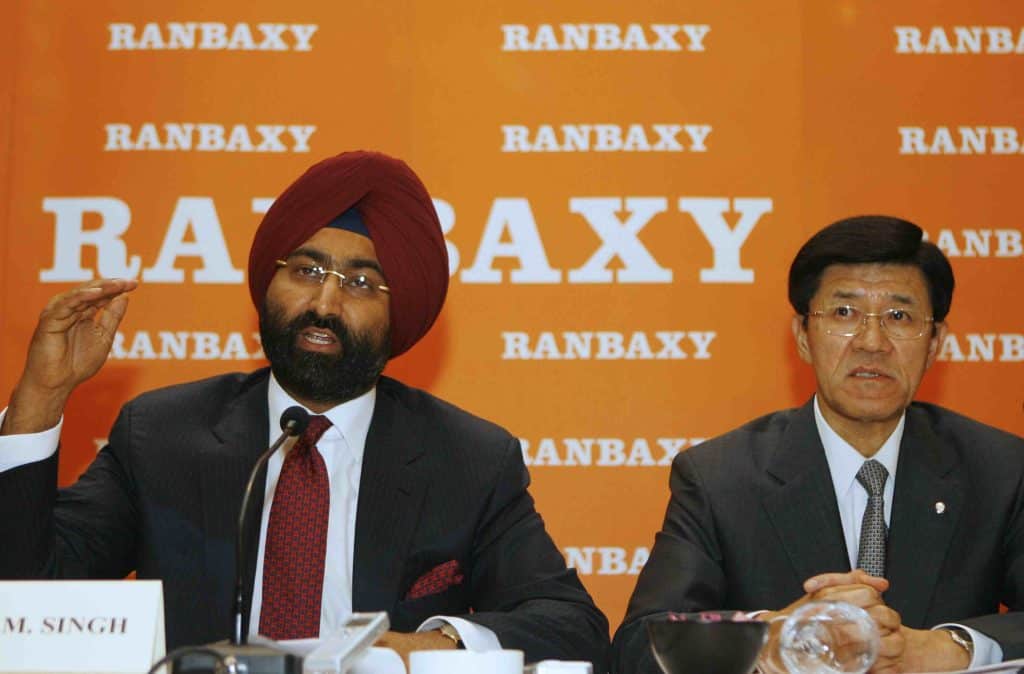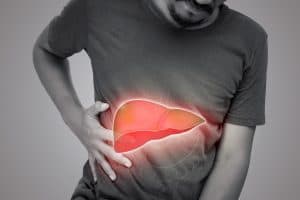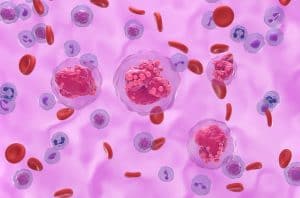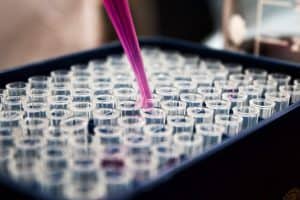
Indian pharma meets Big pharma
pharmafile | June 17, 2009 | Feature | Research and Development, Sales and Marketing | India, business models, clinical trials, pharma
How Indian and established multi-national pharmaceutical companies are converging in their business plans
In the 1990s and early 2000s, India’s generics companies prospered by circumventing patents and copying medicines developed by international pharma companies.
Run by entrepreneurial founders, India’s generics companies were seen as the scourge of the research-based industry and memorably denounced as ‘pirates,’ by big pharma.
Defending their business models, the Indian companies claimed Western patent regulations were too strict, and won praise from NGO campaigners for their part in supplying cheap generic medicines to the developing world.
But this polarised picture has changed. Fast forward to 2009, and the world of pharmaceuticals is a very different place. The two sides of the industry which seemed to be irretrievably opposed are now converging – Indian generics companies are investing in R&D, and big pharma is buying into generics.
India itself is one of the key emerging markets for pharma, and is set to triple in value to $20 billion by 2015, putting it in the top ten global markets. But the sub continent is not just one of the fastest growing markets for pharma – it is also an increasingly important location for low-cost manufacturing and research and development. Equally important is a spate of major deals which have seen India’s generics firms bought out by or collaborating with big pharma. These include Daiichi Sankyo’s acquisition of Ranbaxy, and Pfizer’s extended collaboration with Aurobindo, which suggest Indian firms and big pharma will increasingly rely on each other as new pharma business models emerge.
The 1970 patent act
The most significant event to shape India’s pharmaceutical market was the patent act of 1970 (which became law two years later). The act only recognised patents on chemical processes and not patents on drugs themselves. This opened the door for Indian companies to copy molecules to produce generic versions.
The law came about when British company ICI Pharmaceuticals developed propranolol, a new blood pressure medication. When India’s Cipla started manufacturing a cheaper generic version, ICI protested to the Indian government. Yusuf Hamied, owner of Cipla lobbied the then prime minister Indira Gandhi to reform the country’s strict intellectual property laws, originally introduced by the British in 1852. Legend has it that he asked her: “Should millions of Indians be denied the use of a lifesaving drug just because the originator doesn’t like the colour of our skin?”
Invoking the memory of British imperial rule may have helped persuade Gandhi, but the opportunity to end reliance on foreign drug manufacturers would have been a more decisive factor. India’s Parliament relaxed the patent laws, and helped create a home-grown industry of low-cost generics producers to meet domestic demand. By the 1980s, these companies were also exporting to other markets in large volumes.
As there were few incentives for established foreign pharma companies to invest in the country, interest dried up and many companies sold their operations to Indian companies.
But in 2005 all this came to an end, as India honoured an agreement to bring its intellectual property laws more in line with international agreements. This saw the country introduce 20-year patents on all newly filed drugs, and thereby ending the flow of products for generics companies to copy.
No longer able to rely on a steady stream of new medicines to copy for the domestic market, Indian companies have been forced to seek new ways to maintain and increase revenues.
The reality is that patents on new medicines in India are still easier to overturn than in Europe or the US – and companies do exploit this – but commercial pressures mean Indian companies are nevertheless looking to broaden their horizons. Cipla is among those continuing to pursue a generics-only business model, but other major firms like Ranbaxy, Dr Reddy’s and Aurobindo are diversifying in a number of different directions.
These new approaches fall broadly into four categories – expansion into major overseas generics markets, providing R&D and manufacturing services to the industry, investment in in-house R&D and partnerships with big pharma.
Breaking into major generics markets
The US and European markets are the biggest markets for the generics industry, with growing pressure on healthcare budgets and a wave of imminent patent expiries making them extremely lucrative. Aggressive attacks on US patents are now a familiar part of the industry landscape, and the most audacious example was Ranbaxy’s challenge to Pfizer’s US patent on Lipitor. After three years of legal challenges, in 2006 the company succeeded in overturning a key patent, giving it the right to launch the first generic version one year early in 2010.
But Pfizer and Ranbaxy eventually struck an out-of-court deal which gave Ranbaxy a 180 day period of exclusivity as the only generic manufacturer from November 2011. Ranbaxy also gained rights to market generic versions of the drug in some European countries, while Pfizer forestalled the patent loss for a lucrative extra year. Challenging patents on the industry’s biggest blockbusters will remain a strategy used by Indian companies, but they are not the only competitors in the global generics market. Indeed, while Ranbaxy and Dr. Reddy’s gained a name for overturning key patents, they are dwarfed by some of the biggest generics players. The undisputed giant of generics is Teva, which is expected to earn more than $14 billion in revenues in 2009, far in excess of Ranbaxy’s $1.4 billion revenues last year. Teva’s dominance is based on the size of its portfolio and penetration of the world’s biggest generics market, the US.
A global hub for manufacturing and clinical trials
While Indian companies might not dominate the global marketing of generics, their heritage does make them well placed to be world leaders in pharmaceutical manufacturing and clinical services. The lower cost base remains a very compelling reason to shift production to India as well – consultants KPMG estimated in 2006 that overall manufacturing costs in India were up to 50% cheaper than in western industrial countries.
Major pharma companies have already transferred a great deal of data management, clinical services and manufacturing services, and the demand for contract manufacturing and contract research work continues to grow. Several leading Indian companies are responding by putting pharmaceutical services at the heart of their business models. They have further strengthened their positions by buying up companies and manufacturing facilities in Europe. Piramal Healthcare is a good example of this business model and its acquisition of Pfizer’s UK facility in Morpeth increased its capacity significantly.
There are more than 100 FDA-approved pharma facilities in India, the largest number in any country outside the US, and the country is a major player in manufacturing finished products and active pharmaceutical ingredients (APIs). But like counterparts in Europe, the US and rival emerging market China, Indian companies are not immune to lapses in manufacturing quality.
Ranbaxy suffered a major blow in September 2008 when its manufacturing processes were found to be substandard. US regulator the FDA found serious problems at Ranbaxy’s site in Paonta Sahib and suspended the company’s licence to export 30 products to the US.
Ranbaxy’s revenues have been hit hard as a result, and the affair contributed to the departure in May of the company’s chief executive Malvinder Mohan Singh.
Sun Pharma, and Lupin have also faced warnings from the FDA, which has increased its scrutiny of Asian sites in recent years as the volume of drugs imported into the US rises.
India and China offer similar advantages in the clinical trial sector. Together the two countries account for a third of the world’s population, offering pharma a huge pool of potential clinical trial participants. From a clinical trials perspective, the countires have the extra advantage of being relatively ‘treatment naïve’, with many patients not receiving any prior medication.
McKinsey’s Pharma Leaps Offshore report published in 2006 estimated that trials in locations such as China and India could save up to 60% on costs and speed up patient recruitment by as much as 30 per cent But there is fierce competition between India and China for a share of the clinical trial business, and China looks to be pulling ahead. Data from US government-run website clinicaltrials.gov shows in June 2009, China had a cumulative total of 1176 completed or ongoing trials compared to 970 in India.
There are numerous other countries in the Asia-Pacific region which are competing for clinical trials outsourcing and investment, such as Singapore, Australia, so India must address all the issues which slow down trials and cost extra money. India’s infrastucture – such as its transport network and electricity grid – needs a major overhaul to bring it up to developed world standards, while China has far fewer of these problems.
A new business model for a new world order
2008 saw great changes in the industry, including a breaking down of the barrier between research-based companies and generics operators. For big pharma, generics (and over the counter drugs) promise steady growth over the coming years, providing a counterweight to the riskier and unpredictable patented sector. Until recently, only a handful of R&D-led companies had generics units, and these were generally small scale.
The deal which seemed to definitely mark a shift in pharma’s business model came in June 2008 when Daiichi-Sankyo’s $2.8 billion deal to acquire a controlling stake in Ranbaxy.
The deal seemed to defy the normal pharma business model by bringing together R&D and a large-scale generics businesses under one roof.
However in the 12 months since the deal was first announced, the companies’ merger has been beset with problems (see box) suggesting that this acquisition might not be the one to demonstrate the values of a generics-R&D hybrid model.But there is proof in several other major deals that this is the shape of things to come for pharma. Pfizer, Novartis, GSK and Sanofi-Aventis are all espousing more diversified business models as the best model for the next decade, when the engine for pharma’s growth will be in emerging markets.
Novartis recently added to its Sandoz generics arm with the $1.2 billion acquisition of EBEWE Pharma, an Austrian company specialising in generic injectables, including chemotherapy treatments.
GSK has just expanded its collaboration with South African firm Aspen and Pfizer had also scaled up its ties with India generics firms. The company has acquired rights to 15 injectable products from Claris Lifesciences as well as 60 products (55 pills and five injections) from Aurobindo Pharma. The next decade will see further convergence between R&D and generics businesses, though the very different business cultures and objectives are also likely to throw up organisational difficulties as well as growth opportunities.
Ranbaxy and Dr Reddy’s: building up in-house R&D
Overall, it is clear that India’s pharma companies find themselves at a crucial stage of their evolution, and those companies which aspire to be world beaters have difficult choices to make about their long-terms strategies. One of the most difficult questions is whether or not to invest in pharmaceutical and biological R&D, and if so, how to maximise chances of success. The scale, complexity, level of investment required and sheer riskiness of pharma R&D make it a very different proposition to the generics business or providing pharma services. But India has many factors in its favour. As well as the low cost base, it has an abundance of well educated scientists graduates, and venture capitalists ready to invest in country’s pharma and biotech sectors.
Ranbaxy and Dr Reddy’s are the two Indian companies which have committed themselves to developing novel medicines in the tradition of global pharma. Ranbaxy’s global reach and scale and the dynamism of its leadership had made it the company most likely to transform itself into to an originator of new molecules. Its acquisition by Daiichi Sankyo means that Indians can no longer claim the company as entirely Indian – indeed many expressed disappointment that one of the nation’s flagship companies had fallen into foreign hands, echoing similar events in European M&A over the years.
Ranbaxy is not a recent convert to the merits of R&D. It began its first research activity in 1973 and established its first R&D centre in 1994, but has yet to bring a new molecular entity to market. Daiichi-Sankyo will give Ranbaxy the extra means to launch its first drugs developed in-house, but the Japanese company is likely to eventually make Ranbaxy’s research labs a part of its own R&D network.
Ranbaxy’s most advanced pipeline product is a new anti-malaria combination drug, Arterolane maleate plus Piperaquine phosphate which has just entered phase III trials.
The company is also researching DPP-IV Inhibitors for type II diabetes, a selective Phosphodiesterase 4-b inhibitor for COPD and asthma, and a novel antibiotic for community acquired respiratory tract infection. Meanwhile a novel research collaboration with GSK established in 2003 is now bearing fruit. The collaboration sees Ranbaxy develop a candidate to the proof of concept stage (Phase IIa clinical trials), at which point GSK will take over its development. In January this year Ranbaxy initiated phase I studies on its lead compound for respiratory inflammation.
When the deal was expanded in 2007, Ranbaxy’s Malvinder Mohan Singh summed up what it meant for Ranbaxy and the wider Indian research base.
“This is a great moment for our scientists. The agreement presents a unique opportunity to demonstrate the India-centric advantages of high quality research and development to deliver value at the cutting edge. “I believe the arrangement with GSK is path-breaking and acknowledges the higher level of R&D maturity prevalent today in our state-of-the art labs in India,” he added.
Ranbaxy will receive a milestone payment for initiating phase I studies and will conduct phase II clinical studies up to Proof of Concept. If and when Phase IIa studies are completed successfully, GSK will then have the option to conduct further development through to final marketing.
Dr Reddy’s long-term R&D ambitions
Like Ranbaxy, Dr Reddy’s first invested in R&D in the 1990s, beginning work on developing new diabetes treatment in 1994. Currently in phase III, balaglitazone is in the same class as GSK’s Avandia and Takeda’s Actos. A second generation PPAR-Gamma agonist with partial agonistic properties, the drug promises fewer side effects than the other drugs in the class, but its development has been an arduous experience.
First out-licensed to Nova Nordisk in 1997, balaglitazone was advanced to phase II studies, but after numerous setbacks the Danish company returned the rights in 2004.
Dr Reddy’s found a new partner in Rheosciences that year and the drug is now expected to reach the market by 2011. Dr Reddy’s retains the global marketing rights except for China and Europe, but the drug runs the risk of being eclipsed by newer agents emerging from the industry’s pipelines.
Another drug in its pipeline is DRL 17822, a selective inhibitor of CETP, for the treatment of dyslipidemia, atherosclerosis and associated cardiovascular diseases.
The drug is in the same class as Pfizer’s torcetrapib, which the company abandoned in 2006 after it showed increased mortality and heart attacks in patients, making a follow-up a risky bet.
US pharma company Merck also has a candidate in the same class is in phase II,putting it ahead of DRL 17822 which has just entered phase I. Dr Reddy’s says one of its key aims is to have a critical mass of between three and five drugs in clinical development at any time, a goal which it is currently some years away from achieving. To bring a new focus to its R&D efforts, Dr Reddy’s is to spin off its research into a standalone operation.
From July its drug discovery operations at Hyderabad will be absorbed into Aurigene, a drug discovery centre headquartered in Bangalore. The discovery research resources – employees, facility and infrastructure will transfer into being resources of Aurigene, which will now operate out of two sites – Bangalore and Hyderabad. The company is creating a new independent internal business unit to focus on proprietary drug development and building the R&D portfolio. The organisation will work with Aurigene and other biotech companies to ensure effective management of the ongoing and discovery programmes. All the existing intellectual property will be owned and managed by this new unit. This group will also have responsibility for the development portfolio and the company’s differentiated formulations efforts.
Dr Reddy’s chief executive G V Prasad commented on the changes: “We have been working at delivering sustained growth with profitability to significantly improve shareholder returns. “As we prioritise our company-wide research and development spending, we will now be placing greatest emphasis on R&D activities that can have a significant impact on near-term earnings, while not losing focus on long-term interests of the company.” Ranbaxy and Dr Reddy’s will evolve to become much more like their big pharma counterparts in their corporate goals and ways of working – including the key role of patents.
“Meanwhile those Indian companies that choose to specialise in manufacturing and clinical services are becoming more sophisticated, and developing proprietary technology to differentiate themselves in a competitive market.
This process will continue as India’s industry matures, allowing the companies to compete on the global stage and defend their share of their home market from incoming big pharma competitors.
Related Content

Gilead shares results from two-year analysis of phase 3 study in primary biliary cholangitis
Gilead has announced two-year interim results from the ongoing ASSURE study of investigational seladelpar for …

Rare disease clinical trials: the urgent need for patients to be heard
Ahead of Clinical Trials Day, Soraya Bekkali, from Alexion, AstraZeneca Rare Disease, highlights the urgent …

NeuroSense partners with PhaseV on upcoming phase 3 ALS trial
NeuroSense has announced that it has partnered with PhaseV for its upcoming phase 3 trial …








